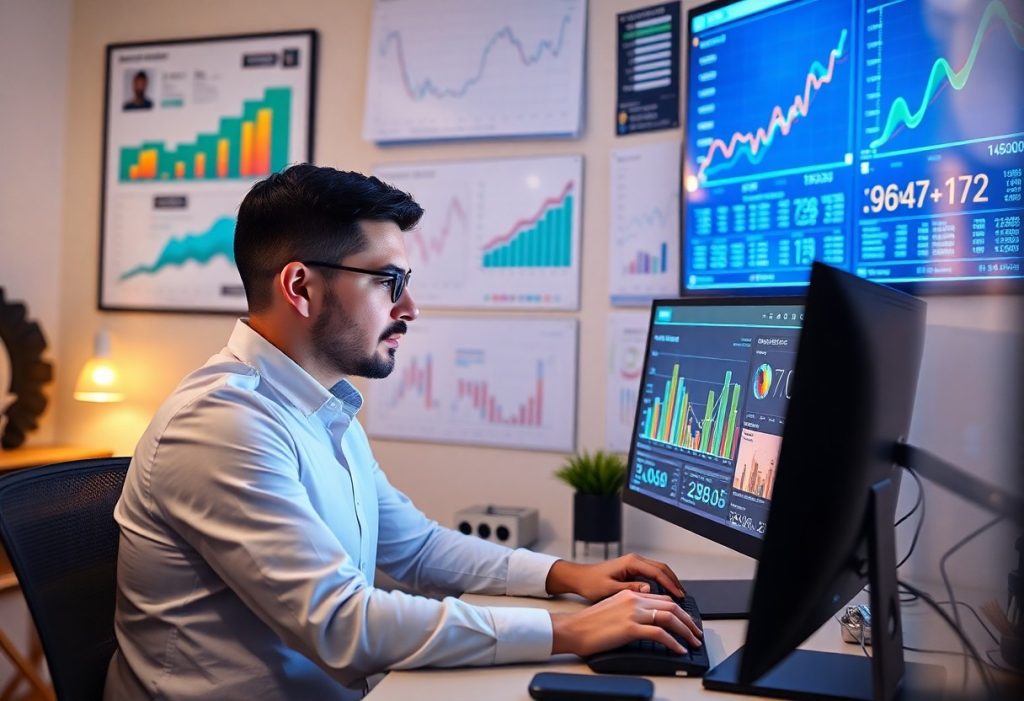Most website owners are unaware of the advanced strategies that can significantly boost their search engine visibility. In this post, you will discover powerful techniques that can enhance your SEO performance and help you stay ahead of the competition. You will learn about innovative tactics, from optimizing your content for user intent to leveraging structured data, that can drive more organic traffic to your site. By implementing these tips, you can transform your online presence and unlock the true potential of your digital marketing efforts.
Key Takeaways:
- Optimize for semantic search by using natural language and related keywords to improve context and relevance.
- Leverage technical SEO elements, such as site speed, mobile-friendliness, and structured data, to enhance user experience and crawlability.
- Focus on building high-quality backlinks through guest posting, content partnerships, and outreach to establish authority and improve ranking.

Understanding Search Engine Algorithms
Before venturing into advanced SEO strategies, it’s necessary to understand how search engine algorithms work. These complex systems determine how websites rank on search results by evaluating various factors that signal relevance and authority. Staying updated on algorithm changes helps you adapt your SEO efforts effectively and ensure higher visibility for your content.
Core Algorithm Updates
By staying informed about core algorithm updates, you can tweak your SEO strategy to align with the latest standards set by search engines. These updates often focus on enhancing user experience and delivering more relevant results, meaning that keeping an eye on them is vital for your website’s success.
Ranking Factors Explained
Explained below are the major ranking factors that search engines consider to determine your website’s standing. Understanding these factors enables you to prioritize your SEO efforts effectively:
- Content quality
- Backlink profile
- User engagement
- Page loading speed
- Mobile-friendliness
Knowing these elements can guide you in optimizing your website for maximum visibility.
Factors that influence your ranking include a variety of technical SEO and on-page elements. A strong emphasis on keyword optimization and value-rich content can significantly enhance your visibility in search results. Consider the following:
- Meta tags
- Alt text for images
- Internal linking
- Social signals
- Local SEO elements
Knowing how these factors interplay helps you craft a well-rounded SEO strategy that positions your site favorably within search results.
Keyword Research Strategies
There’s a significant opportunity to enhance your SEO efforts by focusing on the right keywords. By exploring diverse 17 Advanced SEO Techniques for 2025, you can identify high-impact keywords that align with your audience’s search intent. This research not only drives traffic but also sets the foundation for your content strategy.
Long-Tail Keywords
Research indicates that long-tail keywords, which are typically three or more words, can be highly effective for targeting specific queries. These keywords often have lower competition, making it easier for you to rank higher in search results. By incorporating long-tail keywords into your content, you can attract a more focused audience that is ready to engage with your offerings.
Tools for Effective Research
About using the right tools can significantly enhance your keyword research process. There are several platforms available, each offering unique features that can aid in uncovering valuable keywords. Utilizing these tools allows you to analyze search volume, competition levels, and trends effectively, giving you a solid strategic advantage in your SEO efforts.
For instance, popular tools like SEMrush or Ahrefs provide comprehensive insights into keyword performance, helping you identify profitable opportunities while monitoring your competitors’ strategies. Additionally, tools like Google Keyword Planner can help you discover related terms that might be overlooked. By effectively leveraging these resources, you ensure that your keyword research is not only thorough but also aligned with your broader SEO goals.
On-Page SEO Best Practices
Your on-page SEO efforts play a significant role in enhancing your website’s search visibility. By refining key elements on your pages, you can improve your rankings and user experience. Focus on optimizing your content, meta tags, headers, and images to align with relevant keywords and provide valuable information to your visitors. Effective on-page strategies not only aid search engines in understanding your content but also keep your audience engaged and informed.
Optimizing Meta Tags
Between title tags, meta descriptions, and header tags, optimizing your meta tags is vital for signaling to search engines what your content is about. Effective title tags should be concise yet descriptive, incorporating primary keywords while remaining appealing to users. Your meta descriptions should succinctly summarize your page’s content and encourage clicks by enticing users with a clear value proposition. Consistently applying these best practices ensures that your pages are more discoverable and engaging.
Importance of Internal Linking
Optimizing internal linking is a powerful strategy that strengthens your website’s architecture. By creating a network of links between your pages, you enhance the user experience and enable search engines to crawl your site more efficiently. Internal links allow you to guide visitors to key content, increasing their time spent on your site. Additionally, distributing link equity helps improve the rankings of your most important pages. Prioritize relevant anchor text and contextual relevance to maximize the effectiveness of your internal linking strategy.
Practices for internal linking should focus on link relevance and user intent. Ensure that the links you create provide a clear pathway to related content, enhancing the overall navigational experience. An effective internal linking structure not only distributes link juice across your website but also aids in reducing bounce rates by keeping users engaged longer. Be mindful of avoiding excessive links; instead, prioritize quality over quantity. Regularly audit your internal linking strategy to identify opportunities for improvement and keep your content interconnected.
Off-Page SEO Techniques
Not all SEO strategies happen within your website; off-page SEO techniques play a significant role in enhancing your search engine visibility. These tactics focus on building the authority of your site through factors outside of your control, such as backlinks and social media influence, which can drive traffic and improve your ranking.
Building Quality Backlinks
Before you start your link-building journey, it’s necessary to focus on acquiring quality backlinks rather than a high quantity. Look for opportunities to collaborate with reputable sites in your niche through guest posting, partnerships, or content sharing. High-quality backlinks can significantly boost your site’s authority and organic rankings.
Social Media Influence
Around 3.6 billion people are using social media platforms, and their influence on SEO is undeniable. Harnessing social media can amplify your content reach and engagement. Sharing your content across different channels not only drives traffic but also increases the likelihood of acquiring backlinks from other websites.
And as you leverage social media, ensure you create engaging, shareable content that encourages interaction. Posts that resonate with your audience can lead to more shares, expanding your reach and improving your brand visibility. Moreover, keep an eye on audience trends, as adapting your strategy to align with current interests can further enhance your online presence and foster a loyal community around your brand.
Technical SEO Essentials
Keep in mind that mastering technical SEO is vital for ensuring that your website is crawled effectively and ranks favorably in search engines. By focusing on elements such as site speed, mobile optimization, and structured data, you can significantly enhance your site’s performance and visibility in search results.
Site Speed and Performance
Beside improving user experience, site speed plays a significant role in search engine rankings. A faster loading website not only keeps visitors engaged but also decreases bounce rates, positively impacting your SEO. Optimize images, leverage browser caching, and utilize content delivery networks (CDNs) to enhance your site’s performance.
Mobile Optimization
Against the fast-growing trend of mobile browsing, ensuring that your website is mobile-friendly is mandatory for your SEO strategy. With a responsive design, intuitive navigation, and fast loading times on mobile devices, you cater to the increasing number of users accessing content through smartphones and tablets. Search engines prioritize mobile-friendly sites in their rankings, so you must optimize your website to provide a seamless experience across all devices.
With a focus on mobile optimization, you not only meet user expectations but also comply with search engine algorithms that favor mobile-first indexing. Implement responsive design to adapt your layout across various screen sizes, and improve page speeds for mobile users to keep frustration at bay. Investing in a powerful mobile experience reduces bounces and encourages longer visits, enhancing your site’s overall SEO performance.
Content Marketing Synergy
Many businesses underestimate the power of content marketing synergy in enhancing their SEO strategy. When your content complements your SEO efforts, you not only boost traffic but also create a cohesive brand narrative that resonates with your audience. This synergy allows your website to stand out in search results, fostering both visibility and engagement.
Creating Valuable Content
Against the backdrop of an oversaturated digital landscape, creating valuable content is vital for capturing your audience’s attention. Focus on delivering unique insights, answering common queries, and addressing the pain points of your target audience. By prioritizing quality over quantity, you cultivate trust and encourage visitors to share your content, further amplifying your reach.
Content Distribution Methods
Above all, effective content distribution methods are vital for reaching your intended audience. Utilize various platforms such as social media, email newsletters, and collaborations with influencers to amplify your message. Tailoring your content to fit different formats—like videos, infographics, or blogs—also enhances shareability and engagement, ensuring your content reaches a broader audience.
Further exploring content distribution methods can significantly enhance your marketing efforts. Engage with social media platforms like Facebook, Twitter, and LinkedIn to share your content and interact with followers. Leverage Email marketing to reach subscribers directly; personalize messages to catch interest. Collaborating with influencers or partners can also expose your content to new audiences, creating valuable networking opportunities. Focus on using analytics to track the effectiveness of your strategies, adjusting your approach based on performance metrics to ensure your content consistently performs well.
Conclusion
Drawing together the advanced SEO tips outlined, you can significantly enhance your search engine visibility. By focusing on user experience, optimizing for voice search, leveraging structured data, and consistently analyzing your performance, you position your website for greater success. Implementing these strategies in your SEO practices not only attracts more organic traffic but also improves your site’s authority and relevance in the eyes of search engines. Embrace these techniques and watch your online presence flourish.
Q: What are some advanced keyword research techniques to enhance SEO?
A: To take your keyword research to the next level, consider using tools like Ahrefs or SEMrush to analyze competitor keywords and search volume in your niche. Implement long-tail keywords which often have less competition and higher conversion rates. Additionally, look into geographic targeting by incorporating local keywords, and make use of Google Trends to identify rising topics that align with user intent. Using semantic search techniques, focus on related terms and phrases that enhance the thematic relevance of your content.
Q: How can I optimize my website’s technical SEO for better search engine visibility?
A: Technical SEO involves optimizing your website’s infrastructure for search engines. Start by ensuring your site is mobile-friendly and has a fast loading speed. Use structured data markup to help search engines understand your content better, which can enhance rich snippets in search results. Regularly audit your site for crawl errors using tools like Google Search Console to identify and fix broken links and ensure your sitemap is up-to-date. Additionally, make sure to implement HTTPS for a secure connection, as this is favored by search engines.
Q: What role does high-quality content play in maximizing search engine visibility?
A: High-quality content is crucial for maintaining and increasing visibility in search engines. Focus on creating informative, engaging, and original content that provides value to your audience. Incorporate multimedia elements such as images, videos, and infographics to enhance user experience and dwell time. Keep updating old content to make it relevant and useful, which can help it rank better. Incorporating internal linking between your posts can also improve the user journey and allow search engines to crawl your site more effectively, ultimately benefiting your visibility.





